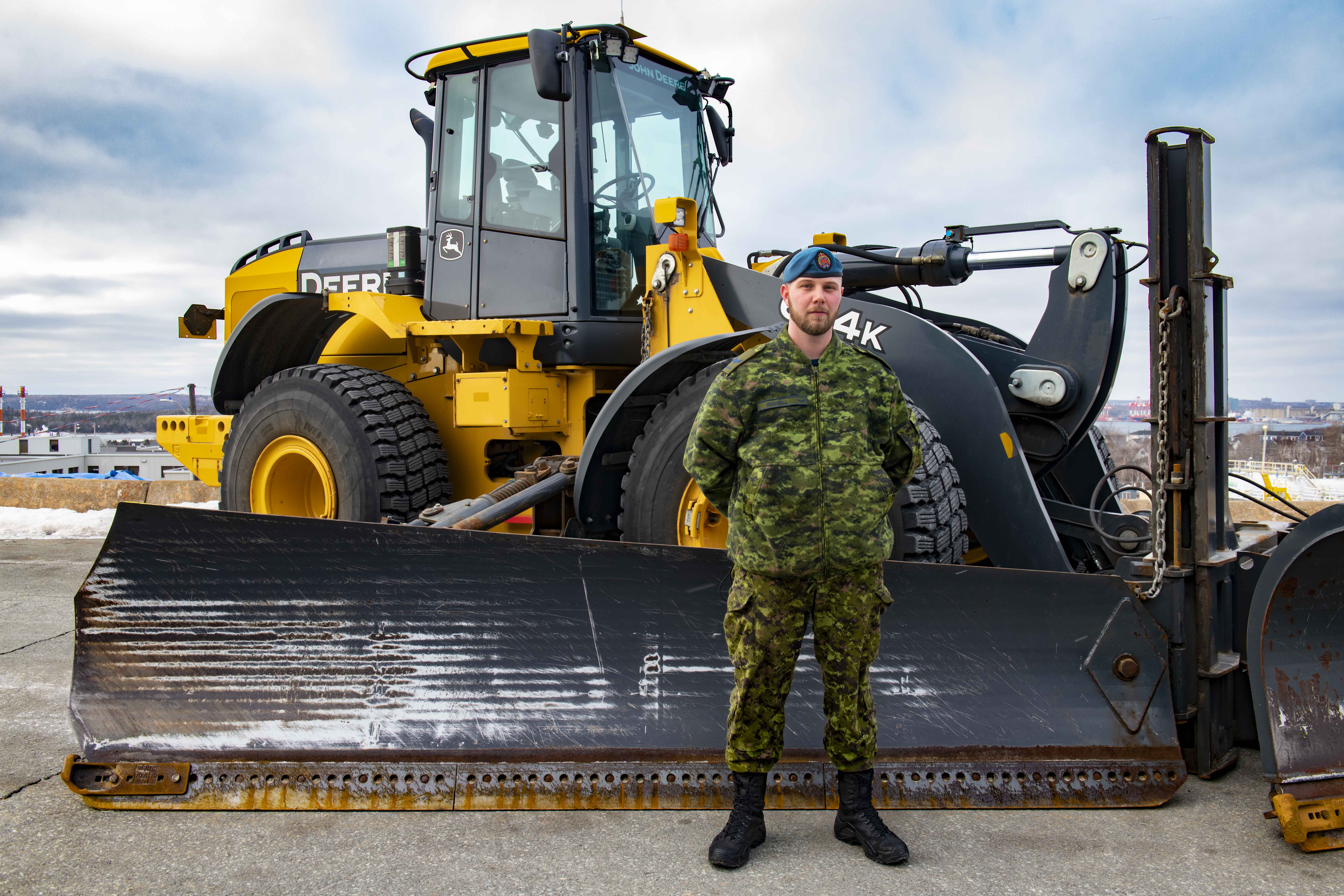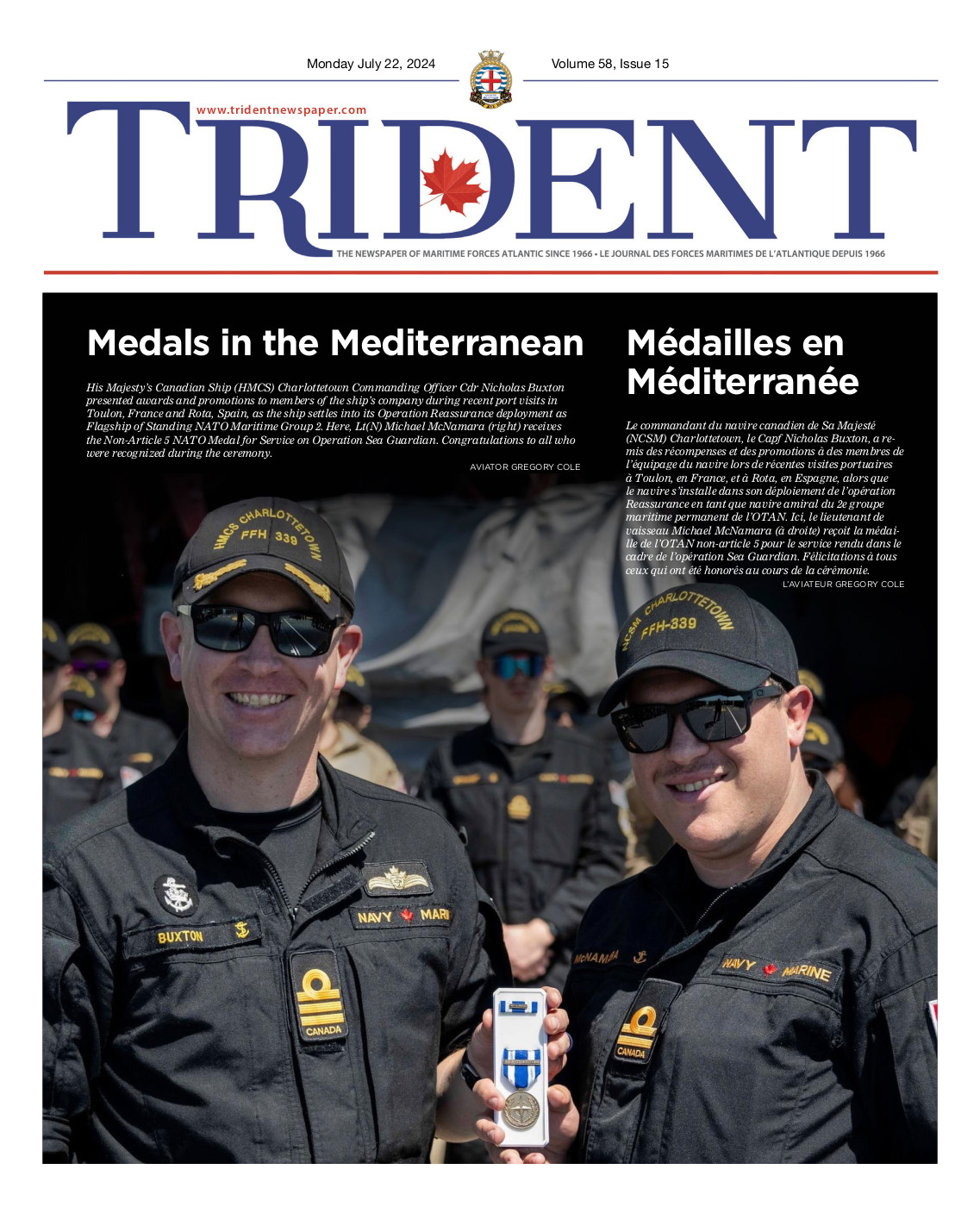
12 Wing people: Cpl Benjamin Russell
By 2Lt Leo Zhou
“The satisfaction of seeing a snow-covered ramp, and then seeing the result of snow clearing at the end of the day” is Cpl Benjamin Russell’s favourite thing about being part of the Snow and Ice Clearing Operations (SNIC Ops) team.
Cpl Russell is a Mobile Support Equipment Operator (MSE Op) currently working for Transport and Electrical Mechanical Engineering (TEME) at CFB Halifax, and detached to 12 Wing Shearwater. He joined the CAF in 2014, following in his father’s footsteps. His father was also an MSE Op based in Halifax, and had attained the rank of MWO before retiring in 2019.
After basic training, Cpl Russell completed his Qualification Level Three course (QL 3) at the Canadian Forces Logistics Training Cadre in Borden, Ontario, before arriving at 12 Wing. His father was actually the acting Company Sergeant Major for his QL 3 course and presented him with his diploma. “It was quite interesting, having him on course,” his father said. Each year, from November 15 to April 15, he is a member of the SNIC Ops team.
SNIC Ops is part of the Special Purpose Vehicles section of the MSE Op trade. “The other sections are General Purpose Vehicles, the refuelling section, and Mobile Support Equipment Safety for members who have completed the Road Vehicle Safety Course,” Cpl Russell says.
During snow season, MSE Ops from other sections are brought into the team. When it’s not snowing, shifts are typically eight hours long, with the day shift running from 06:00 to 14:00 and the night shift from 22:00 to 06:00. Members of the day shift are on call from 14:00 to 18:00 and night shift is on call from 18:00 to 22:00, so that coverage is maintained at all times. During these eight-hour shifts, personnel maintain their equipment and complete administrative tasks.
When it does snow, the tempo picks up and the shifts lengthen to 12 hours until the snow is cleared. Cpl Russell recalls that after a large storm in 2015, “SNIC Ops ran 12-hour shifts for seven days straight,” although so far, he has not experienced anything of that scale.
“The main challenge of SNIC Ops is traffic, be it people, cars or aircraft,” Cpl Russell says. “The Sea King Club is one of the hardest areas to clear, due to the shape of the parking lot and the light poles in the middle.” He says some snow has to be left un-cleared, leading to ice formation through flash freezing, making it more difficult to remove later.
SNIC Ops has different priority areas after a snowfall and must adhere to these priorities. Priority one areas need to be cleared no more than 24 hours after the snow has stopped, these areas include Taxiway Foxtrot and Alpha, the fire route, the Canadian Forces Ammunition Depot, and other areas that are essential for wing operations. Priority two areas need to be cleared within 48 hours and encompass areas such as their own TEME building, supply, and imaging. Within 72 hours, priority three areas such as the back of the Sea King Club, and Shearwater Arena are cleared.
“The best way to help SNIC Ops out,” says Cpl Russell, “is for people on base to give a little leeway when it comes to the small stuff such as a little bit of ice in a parking lot.”





